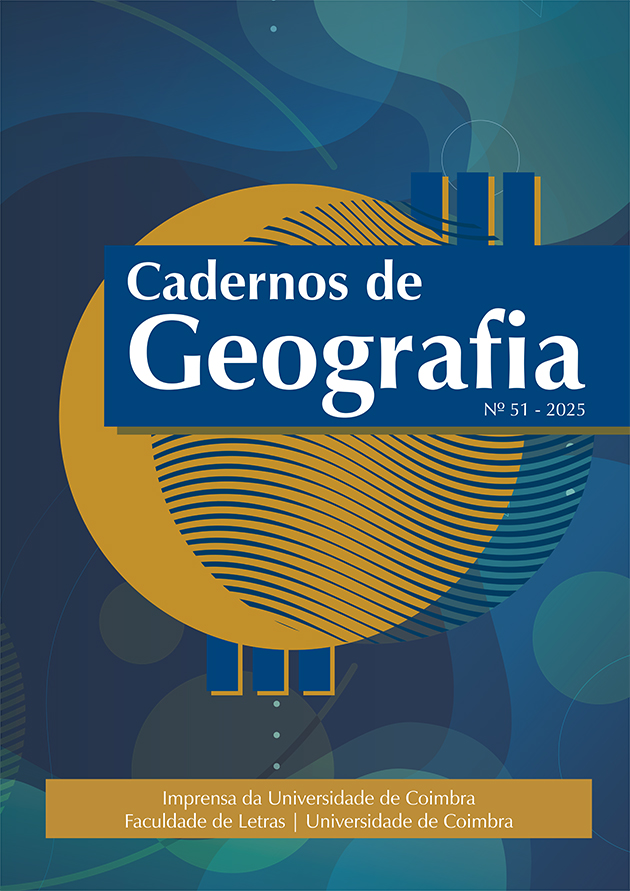Avaliação da recuperação de vegetação sob diferentes condições de severidade do fogo no centro de Portugal
DOI:
https://doi.org/10.14195/0871-1623_51_1Palavras-chave:
Recuperação da vegetação, Composição florística, Condições abióticas, DNBR, Regiões de montanhosasResumo
As mudanças na paisagem induzidas por incêndios florestais constituem um problema ambiental no sul da Europa e estão a tornar-se cada vez mais relevantes, especialmente em áreas rurais, onde as mudanças no uso do solo estão a promover uma maior disponibilidade de combustível e incêndios mais frequentes e extensos. Em simultâneo, estas mudanças estão a promover paisagens dominadas por matos, com perdas de biodiversidade e implicações na dinâmica da vegetação. O objetivo deste estudo é avaliar a recuperação da vegetação após incêndios, numa região montanhosa do centro de Portugal, sob diferentes níveis de severidade e condições abióticas, com o intuito de analisar a sua influência na dinâmica da vegetação. Produtos do Copernicus Sentinel-2 foram usados para calcular diferentes índices relevantes para incêndios florestais, como o Normalized Difference Vegetation Index (NDVI), Normalized Burn Ratio (NBR) e o delta Normalized Burn Ratio (dNBR), em conjugação com dados de cobertura e florísticos, recolhidos em 15 parcelas de campo (cada uma com 100 m2). Os resultados mostraram que, apesar de não ser possível estabelecer uma relação entre a severidade do incêndio e a recuperação da vegetação, os seus atributos após o incêndio foram claramente influenciados pelas condições abióticas e pela composição florística pré-incêndio, particularmente pela presença de espécies com recuperação a partir de toiça. Cerca de 5 anos após o incêndio, a maioria das parcelas apresentou taxas de regeneração compatíveis com o esperado, tendo em conta a dinâmica potencial, dado que as espécies arbustivas predominantes estão bem-adaptadas à perturbação provocada pelo fogo. No entanto, as parcelas com maior cobertura e altura (estrato arbustivo alto) estavam dominadas pela espécie arbórea invasora Acacia dealbata, apresentando um padrão distinto em comparação com as condições de recuperação de vegetação predominantes na área de estudo.
Downloads
##submission.downloads##
Publicado
Edição
Secção
Licença
Direitos de Autor (c) 2025 Cadernos de Geografia

Este trabalho encontra-se publicado com a Licença Internacional Creative Commons Atribuição 4.0.
Os autores conservam os direitos de autor e concedem à revista o direito de primeira publicação, com o trabalho simultaneamente licenciado sob a Licença Creative Commons Attribution que permite a partilha do trabalho com reconhecimento da autoria e publicação inicial nesta revista.











